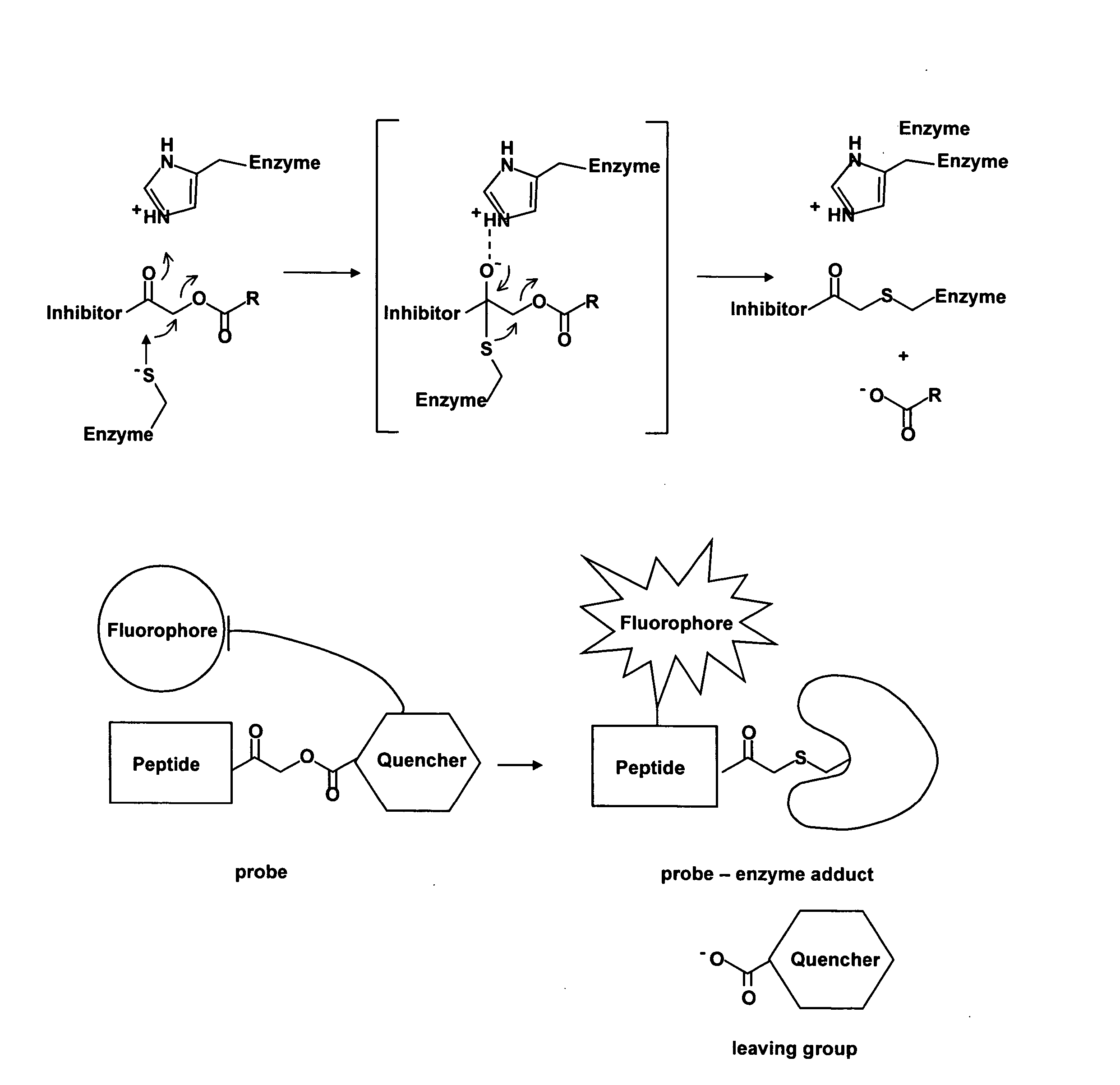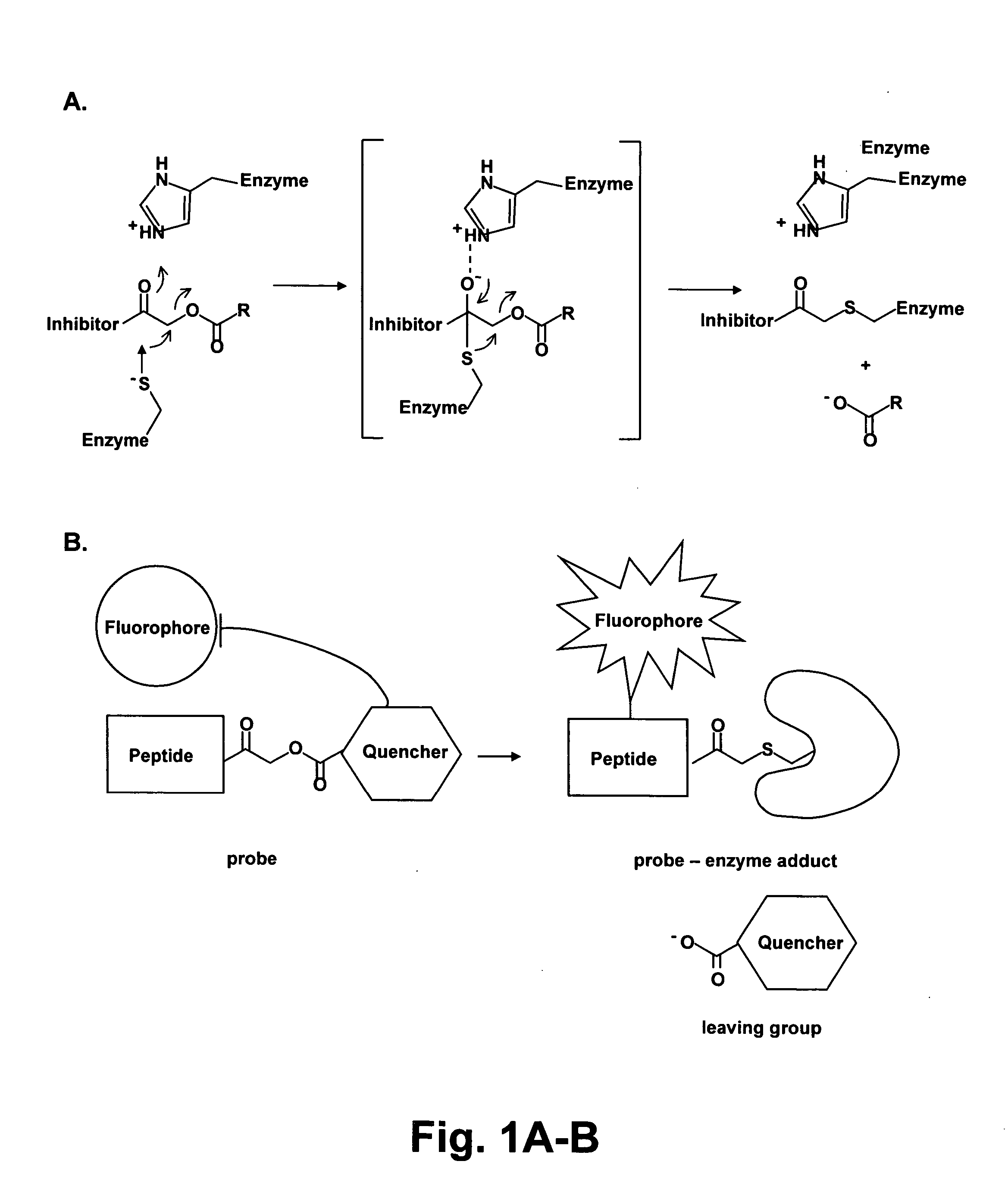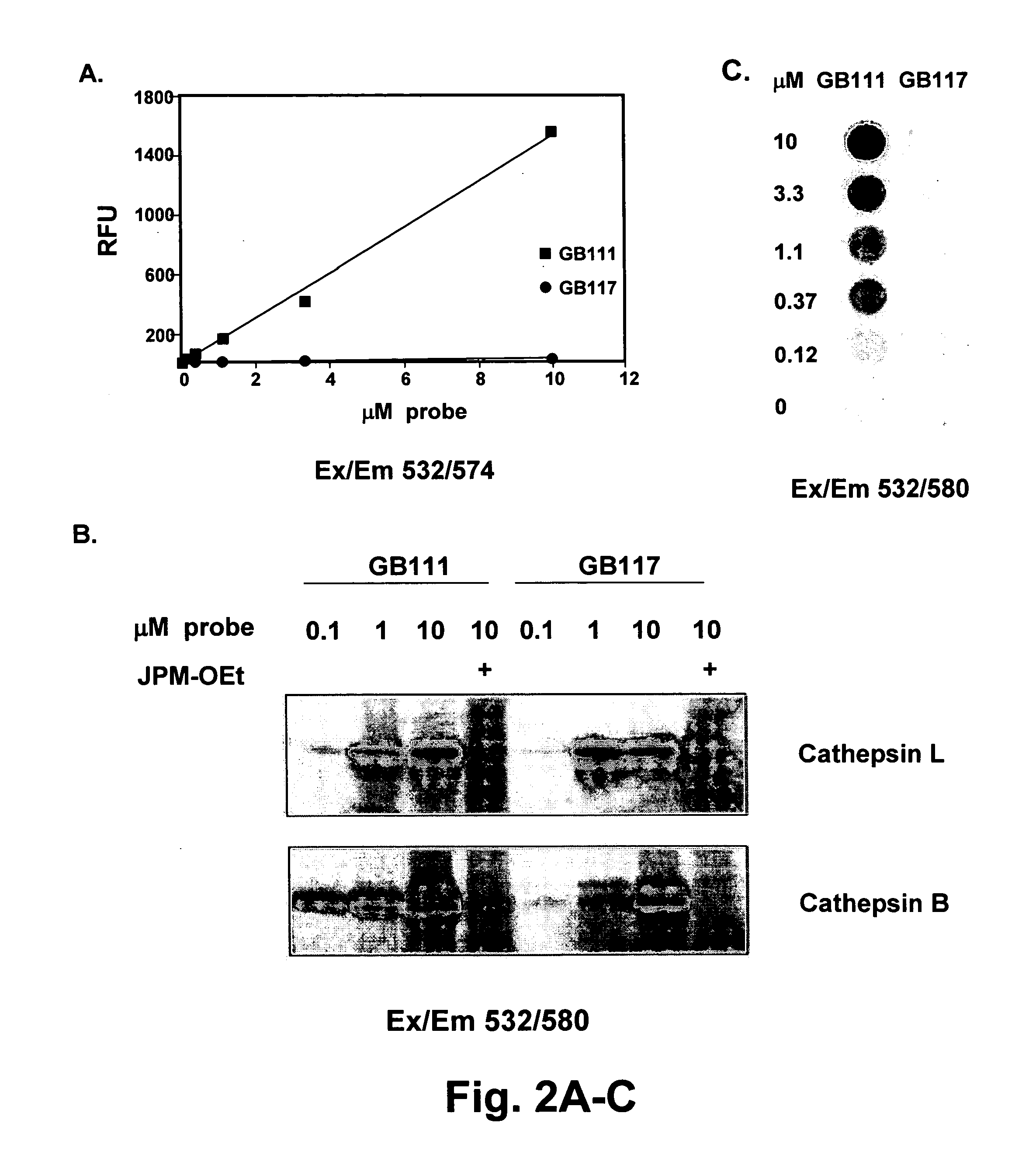Imaging of protease activity in live cells using activity based probes
a protease activity and probe technology, applied in the field of imaging, can solve the problems of limiting the use of enzyme regulation and localization in high-resolution studies, lack of specificity and cell permeability, and difficulty in monitoring the dynamic nature of this regulation in the context of a live cell or whole organism
- Summary
- Abstract
- Description
- Claims
- Application Information
AI Technical Summary
Benefits of technology
Problems solved by technology
Method used
Image
Examples
example 1
Design and Synthesis of Reactive Probes
[0072] Unless otherwise noted, all resins and reagents were purchased from commercial suppliers and used without further purifications. All solvents used were of HPLC grade. All water-sensitive reactions were preformed in anhydrous solvents and under positive pressure of argon. Reactions were analyzed by LC / MS using an API 150EX (Applied Biosystems). Reverse-phase HPLC was conducted with an ÅKTA explorer 100 (Amersham Pharmacia Biotech) using C18 columns. High-resolution MS analyses were performed by Stanford Proteomics and Integrative Research Facility using a Bruker Autoflex MALDI TOF / TOF mass spectrometer. Fluorescent scanning of gel and plates were done using a Typhoon 9400 (GE Healthcare) flatbed laser scanner (Amersham Biosciences).
[0073] The exemplified embodiments below focus on the acyloxymethyl ketone (AOMK) reactive group for probe design as this “warhead” targets diverse families of cysteine proteases (Refs. 9, 29). More important...
example 2
Testing of Potency and Quenching / Labeling by Probes
[0171] We attached the fluorophore to the probe at the P1 lysine side-chain in order to optimize proximity to the quenching group. Previous work has shown that the majority of critical substrate interactions take place in the P2 position of the papain family proteases (Ref 32). This close positioning resulted in a probe that showed greater than 70-fold quenching when compared to the non-quenched control probe (FIG. 2a). This amount of quenching is sufficient for imaging applications and is in line with other reported proximity-induced quenching reagents (Ref 30). When we performed kinetic inhibition studies for the two papain family proteases cathepsins B and L we found that modification of the P1 lysine of the free amine intermediate of GB111 (NH2-GB111) resulted in a 100-fold loss of potency towards cathepsin L and 30 fold loss of potency for cathepsin B (Table 1). Determination of kinetic rate constants of inhibition.
[0172] The...
example 3
Use of Probes in Cultured Cells
[0178] Having confirmed that both the qABP and the control probe label multiple papain family proteases in vitro at reasonable kinetic rates we set out to determine if these probes could label endogenous enzyme targets in intact cells. The probes were added to monolayers of live NIH-3T3 cells followed by collection, lysis of cells and analysis by SDS-PAGE (FIG. 3a). These initial results confirmed that both probes freely penetrated cells and labeled a series of protease targets in a highly selective way. Furthermore, the probes show virtually no background labeling when papain family proteases were inactivated by pre-treatment of cells with JPM-OEt. Kinetic analysis of the labeling of the protease targets indicated that GB117 had a slower rate of modification than did GB111 suggesting that extended labeling times would be required to obtain optimal signal (FIG. 3b). Interestingly, the pattern of proteases labeled by GB111 included a species around 33 ...
PUM
| Property | Measurement | Unit |
|---|---|---|
| pH | aaaaa | aaaaa |
| v/v | aaaaa | aaaaa |
| distance | aaaaa | aaaaa |
Abstract
Description
Claims
Application Information
 Login to View More
Login to View More - R&D
- Intellectual Property
- Life Sciences
- Materials
- Tech Scout
- Unparalleled Data Quality
- Higher Quality Content
- 60% Fewer Hallucinations
Browse by: Latest US Patents, China's latest patents, Technical Efficacy Thesaurus, Application Domain, Technology Topic, Popular Technical Reports.
© 2025 PatSnap. All rights reserved.Legal|Privacy policy|Modern Slavery Act Transparency Statement|Sitemap|About US| Contact US: help@patsnap.com



